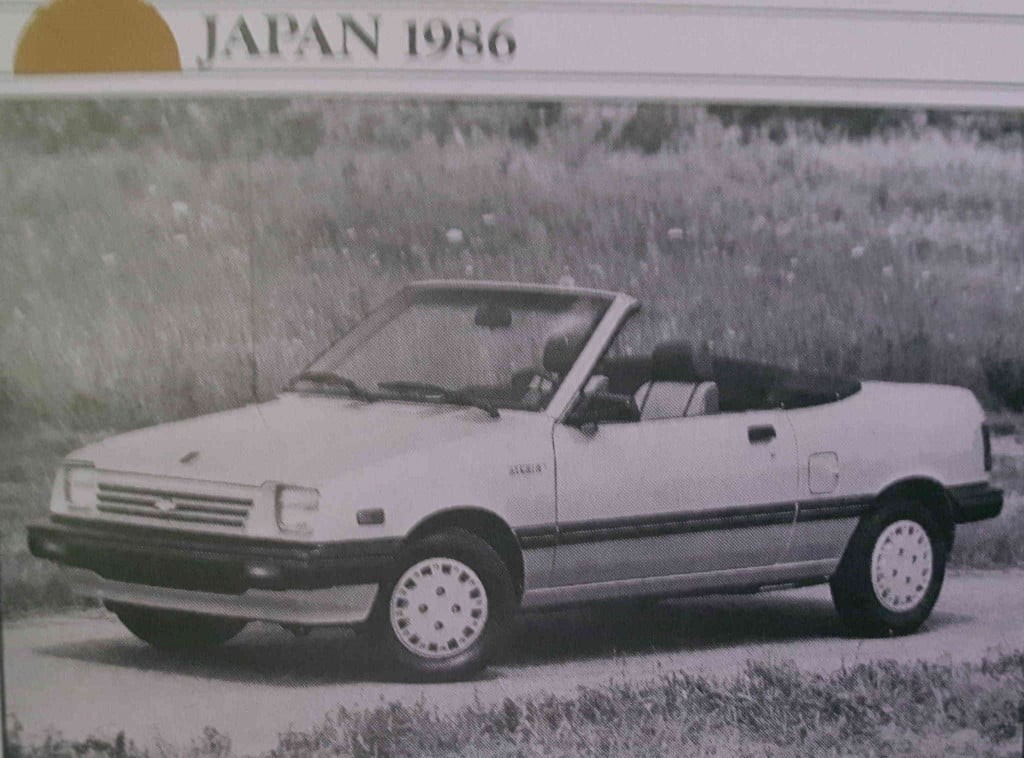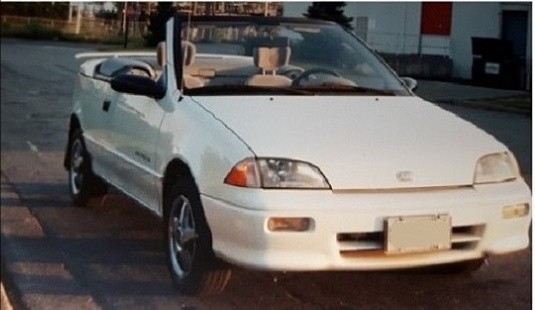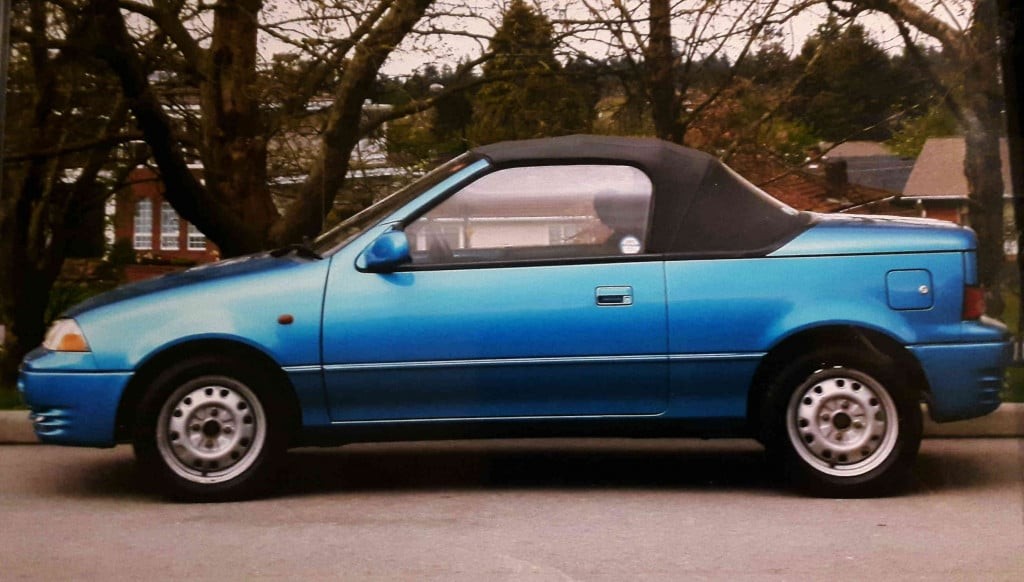The quest for unique and affordable convertibles often leads down intriguing paths. For enthusiasts of quirky and compact cars, the Geo Metro Convertible emerges as a fascinating, albeit rare, find. Born from a desire for open-top motoring in a fuel-efficient package, this convertible holds a special place in automotive history. This article dives into the details of the Geo Metro convertible, exploring its origins, production, and the variations that make it a distinctive choice for collectors and admirers alike.
The story begins with a prototype, a glimpse into what could have been even earlier. Around 1985-1986, Chevrolet explored the idea of a convertible based on the MK1 Chevrolet Sprint. Motor Trend hinted at this initial concept, showcasing a potential open-top variant of the Sprint. This early exploration laid the groundwork for the Geo Metro convertible that would eventually reach North American markets.
 Chevrolet Sprint Convertible Prototype circa 1985-1986
Chevrolet Sprint Convertible Prototype circa 1985-1986
When the Geo Metro convertible finally debuted, it was exclusively for North America. Interestingly, Canadian markets saw these convertibles badged under different names from 1990 to 1991. They were marketed as Chevrolet Sprint convertibles or even Pontiac Firefly convertibles, adding a layer of branding complexity. Notably, a driver-side airbag was incorporated into the Canadian models sometime in 1991, enhancing safety features.
Every Geo Metro convertible originated from Japan, a detail reflected in the VIN, starting with the letter ‘J’. Under the hood, the G10 3-cylinder 6V TBI engine was the sole powertrain option. This engine was paired with either a 5-speed manual transmission for those seeking a more engaging drive, or a 3-speed automatic for ease of use. The cars rode on 13-inch wheels and tires, maintaining their compact and nimble character.
 1993 Geo Metro Convertible in Red with Aftermarket Spoiler
1993 Geo Metro Convertible in Red with Aftermarket Spoiler
Production numbers reveal the Geo Metro convertible’s rarity. Approximately 3,000 units were estimated for 1990. Production then surged to around 16,000 in 1991, before declining to 11,075 in 1992, and further down to 6,548 in 1993. These figures highlight the limited production run and contribute to the model’s collectibility today.
Beyond the Geo Metro badging, Suzuki also produced its own convertible versions, the Suzuki Swift Convertible or Suzuki Cultus Convertible, from February 1992 to early 1993. These models, identified by chassis code AK34S, had unknown production numbers, adding to their mystique.
 Corrected Image of Geo Metro Convertible
Corrected Image of Geo Metro Convertible
Suzuki-badged convertibles boasted the more powerful G13BB SOHC 16V TBI engine and offered 5-speed manual or CVT transmissions. Stepping up in features, they included 14-inch wheels, GTi front disc brakes, and sedan rear drums. Standard equipment was generous, featuring A/C with Econ mode, tilt steering, power windows and mirrors, dual map lights, adjustable seats, fog lamps, and digital gear indicators. Notably, Suzuki convertibles sported the sportier 1992-1993 GTi lower bumper covers. Factory colors for the Suzuki Cultus Convertible included Triton Blue, a surprisingly different shade from the blue prototype seen in brochures.
 1992 Suzuki Cultus Convertible in Triton Blue Factory Color
1992 Suzuki Cultus Convertible in Triton Blue Factory Color
In conclusion, the Geo Metro convertible and its Suzuki counterparts represent a unique chapter in convertible history. Their rarity, fuel efficiency, and quirky charm make them appealing to a niche group of automotive enthusiasts. Whether badged as a Geo, Chevrolet Sprint, Pontiac Firefly, Suzuki Swift, or Suzuki Cultus, these convertibles offer a distinctive open-air driving experience in a compact and economical package.
